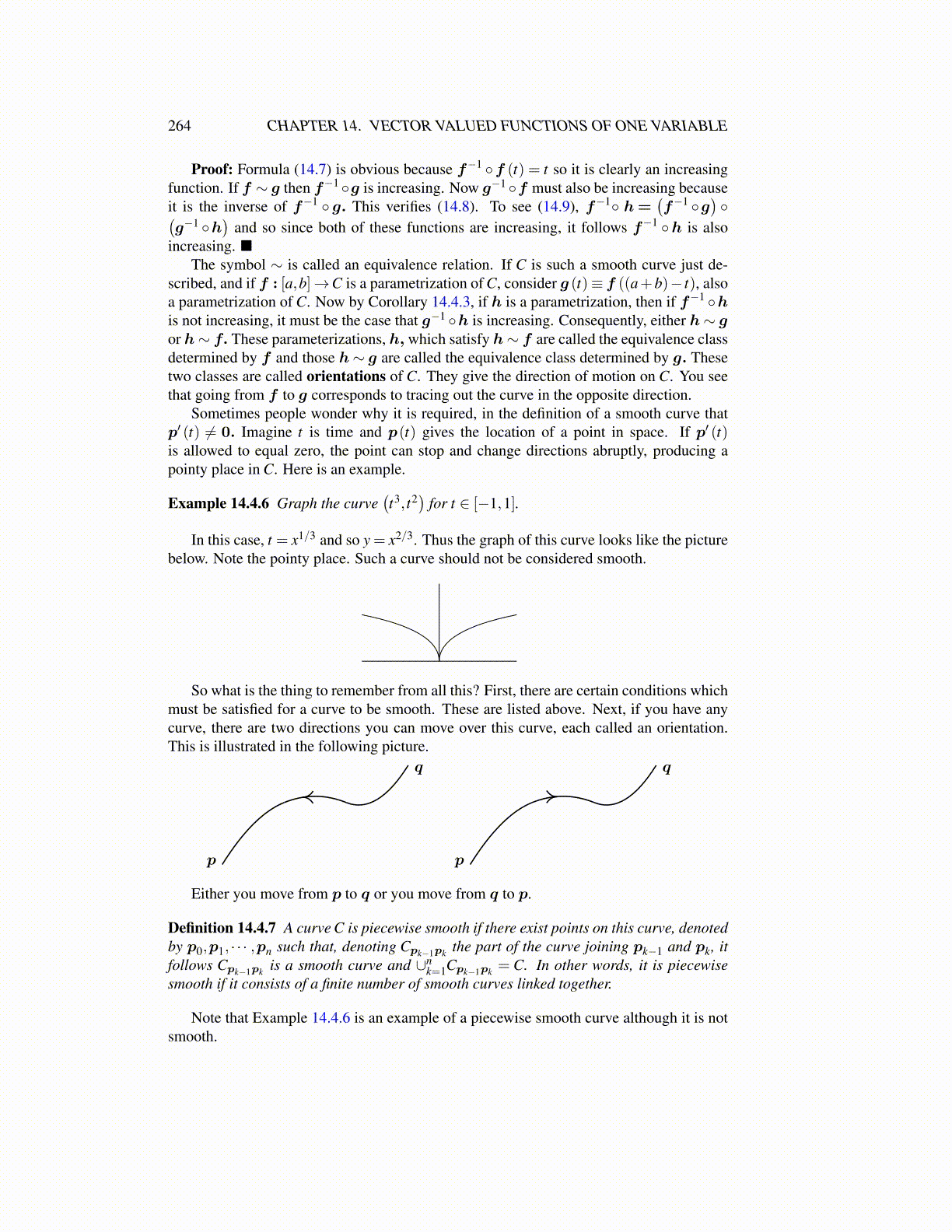
264 CHAPTER 14. VECTOR VALUED FUNCTIONS OF ONE VARIABLE
Proof: Formula (14.7) is obvious because f−1 ◦f (t) = t so it is clearly an increasingfunction. If f ∼ g then f−1 ◦g is increasing. Now g−1 ◦f must also be increasing becauseit is the inverse of f−1 ◦ g. This verifies (14.8). To see (14.9), f−1◦ h=
(f−1 ◦g
)◦(
g−1 ◦h)
and so since both of these functions are increasing, it follows f−1 ◦h is alsoincreasing. ■
The symbol ∼ is called an equivalence relation. If C is such a smooth curve just de-scribed, and if f : [a,b]→C is a parametrization of C, consider g (t)≡ f ((a+b)− t), alsoa parametrization of C. Now by Corollary 14.4.3, if h is a parametrization, then if f−1 ◦his not increasing, it must be the case that g−1 ◦h is increasing. Consequently, either h∼ gor h∼ f. These parameterizations, h, which satisfy h∼ f are called the equivalence classdetermined by f and those h∼ g are called the equivalence class determined by g. Thesetwo classes are called orientations of C. They give the direction of motion on C. You seethat going from f to g corresponds to tracing out the curve in the opposite direction.
Sometimes people wonder why it is required, in the definition of a smooth curve thatp′ (t) ̸= 0. Imagine t is time and p(t) gives the location of a point in space. If p′ (t)is allowed to equal zero, the point can stop and change directions abruptly, producing apointy place in C. Here is an example.
Example 14.4.6 Graph the curve(t3, t2
)for t ∈ [−1,1].
In this case, t = x1/3 and so y = x2/3. Thus the graph of this curve looks like the picturebelow. Note the pointy place. Such a curve should not be considered smooth.
So what is the thing to remember from all this? First, there are certain conditions whichmust be satisfied for a curve to be smooth. These are listed above. Next, if you have anycurve, there are two directions you can move over this curve, each called an orientation.This is illustrated in the following picture.
p
q
p
q
Either you move from p to q or you move from q to p.
Definition 14.4.7 A curve C is piecewise smooth if there exist points on this curve, denotedby p0,p1, · · · ,pn such that, denoting Cpk−1pk the part of the curve joining pk−1 and pk, itfollows Cpk−1pk is a smooth curve and ∪n
k=1Cpk−1pk = C. In other words, it is piecewisesmooth if it consists of a finite number of smooth curves linked together.
Note that Example 14.4.6 is an example of a piecewise smooth curve although it is notsmooth.